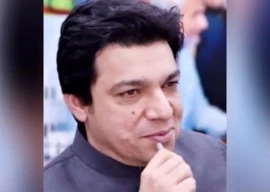
Once a town of 7,000 inhabitants, Gajjar is now little more than a moonscape of dusty ruins, its mud houses reduced to rubble by the huge earthquake that hit Balochistan.
But in Gajjar, as in many places, survivors say they have seen little in the way of aid from the government.
Baloch nationalists have set up the town’s only relief camp, but locals say they are relying on river water, scavenged dates and the charity.
“We don’t have anything to eat except dates,” local Khalil Ahmad told AFP. “We still hope for government’s assistance, which does not seem to be in sight.”
The vast majority of buildings in Gajjar were made of mud bricks and collapsed easily when the tremors began.
Naseer Wari, a senior official with the local government, said they had handed out just 300 tents, leaving thousands to cobble together makeshift shelters from sticks and rags to get respite from the blazing sun.
The town’s 12-bed hospital has been left unusable, with huge cracks in the walls.
Gajjar lies in the Mashkey area of Awaran district and is a stronghold of Baloch nationalist militants.
On Thursday a helicopter carrying the NDMA chief reportedly came under rocket fire, highlighting the dangers facing the relief effort.
Amid the dust and wreckage of Gajjar, there have been some moments of hope – three children, the youngest just three years old were found alive in the ruins of a house.
Moments of solidarity too – the grocer who handed out rice, biscuits, potato chips and flour to the hungry, and the pharmacist who dug through the rubble of his shop to get medicines for those who needed them.
Published in The Express Tribune, September 28th, 2013.

















COMMENTS
Comments are moderated and generally will be posted if they are on-topic and not abusive.
For more information, please see our Comments FAQ